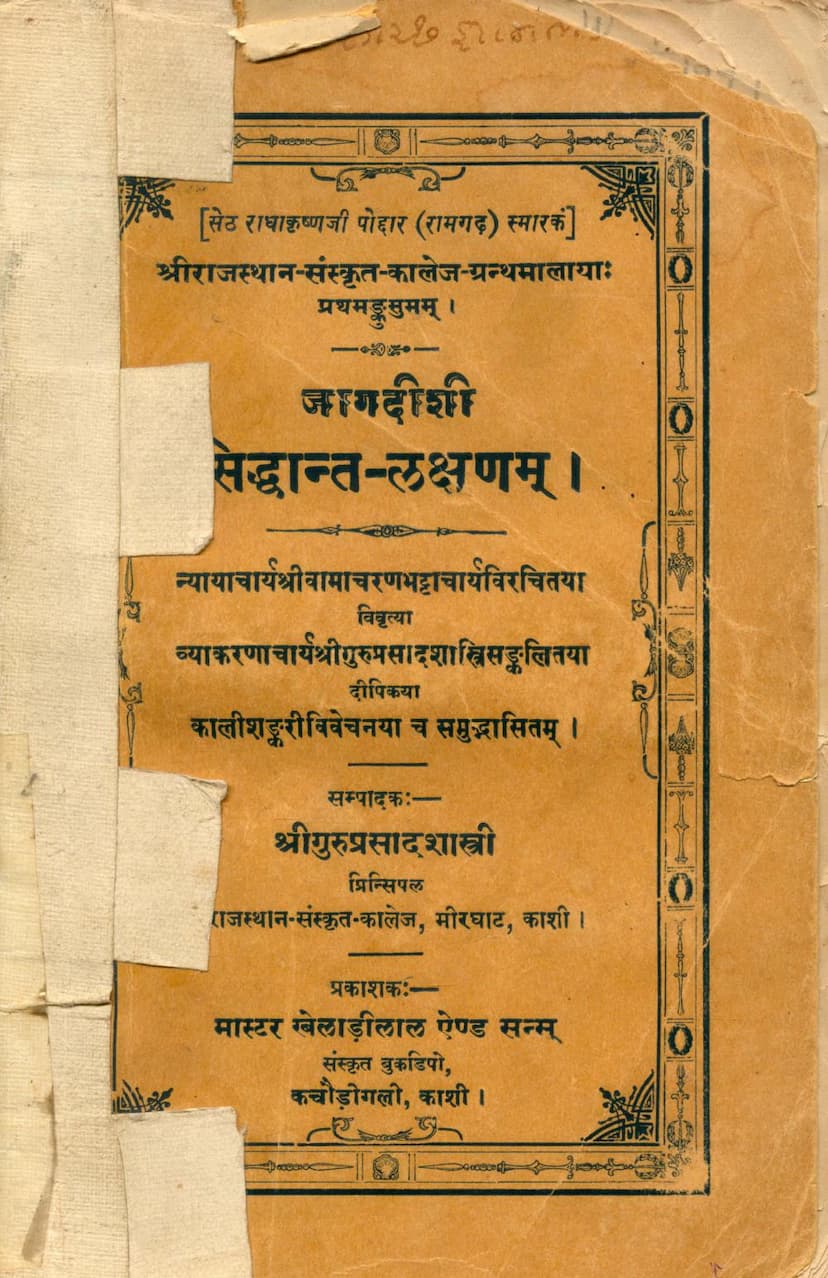Siddhant Lakshan
Added to library: September 2, 2025

Summary
Here's a comprehensive summary of the provided Jain text, focusing on the core aspects of "Siddhanta Lakshana":
Book Title: Siddhanta Lakshana Author: Ganeshopadhyay Publisher: Master Khelari Lal & Sons Catalog Link: https://jainqq.org/explore/032123/1
This book, "Siddhanta Lakshana" by Mahamahopadhyaya Gangeshopadhyaya, is a significant work in the field of Navya Nyaya (New Logic). It is presented with multiple commentaries, highlighting its complexity and the importance placed on understanding its nuances by scholars. The work is dedicated to Seth Radhakrishnaji Poddar as a memorial.
Core Subject Matter:
"Siddhanta Lakshana" is a profound treatise on a specific aspect of Indian logic, likely dealing with definitions, principles, or established doctrines within the philosophical framework of Nyaya. The title itself suggests a focus on the fundamental characteristics or marks of established philosophical truths. Given the context of Navya Nyaya, it would delve into precise analytical definitions and the logical structure of philosophical arguments.
Key Features Highlighted by the Commentaries:
The book is illuminated by several renowned commentaries, indicating that the original text of Gangeshopadhyaya is concise and requires extensive explanation to be fully grasped. The mentioned commentaries are:
- Didhiti (दीधिति): By Raghunath Shiromani. This is a foundational and highly respected commentary in Navya Nyaya.
- Jagadishi (जागदीशी): By Jagadish Tarkalankar. Another extremely influential commentary, known for its detailed explanations.
- Vivriti (विवृति): By Vamacharan Bhattacharya. This commentary aims to elaborate on the text.
- Dipika (दीपिका): By Guru Prasad Shastri. Described as shedding new light on the subject.
- Kalishankari (कालीशंकरी): By Kalishankar Bhattacharya. This commentary further elucidates the text.
The presence of these multiple, layered commentaries underscores the depth and difficulty of Gangeshopadhyaya's original work, particularly the "Siddhanta Lakshana" section. It suggests that the original text might be aphoristic or highly condensed, making these commentaries essential for its interpretation and understanding.
Historical and Scholarly Context:
- The introduction (Prastavika) positions logic (Anvikshiki) as a supreme among the eighteen Vidyasthanas (branches of knowledge), essential for attaining liberation (Nihshreyasa).
- It traces the lineage of this logical tradition from Gautama's Nyaya Sutras, which were challenged by heterodox schools like Yogachara and Charvaka.
- Gangeshopadhyaya's work is presented as a crucial defense and development of this tradition, particularly through his "Tattvachintamani," which is described as a "proof-text" for logicians.
- The text acknowledges the extensive development of Nyaya through various commentators and their commentaries, leading to a vast body of literature, referred to as "Navya Nyaya."
- The "Siddhanta Lakshana" section within this larger tradition is noted for its brevity and the need for Guru's guidance and the Didhiti commentary for its comprehension.
Overall Significance:
"Siddhanta Lakshana" by Gangeshopadhyaya, as presented in this edition with its extensive commentaries, represents a pivotal contribution to the sophisticated analytical philosophy of Navya Nyaya. The book focuses on defining the essential characteristics of established philosophical doctrines, a task requiring meticulous logical analysis and profound understanding of the preceding tradition. The multitude of commentaries reflects the text's importance and the scholarly effort dedicated to preserving and disseminating this complex philosophical knowledge. The publication itself, in 1933 from Varanasi, signifies a continued interest and scholarly engagement with these foundational Indian philosophical texts.